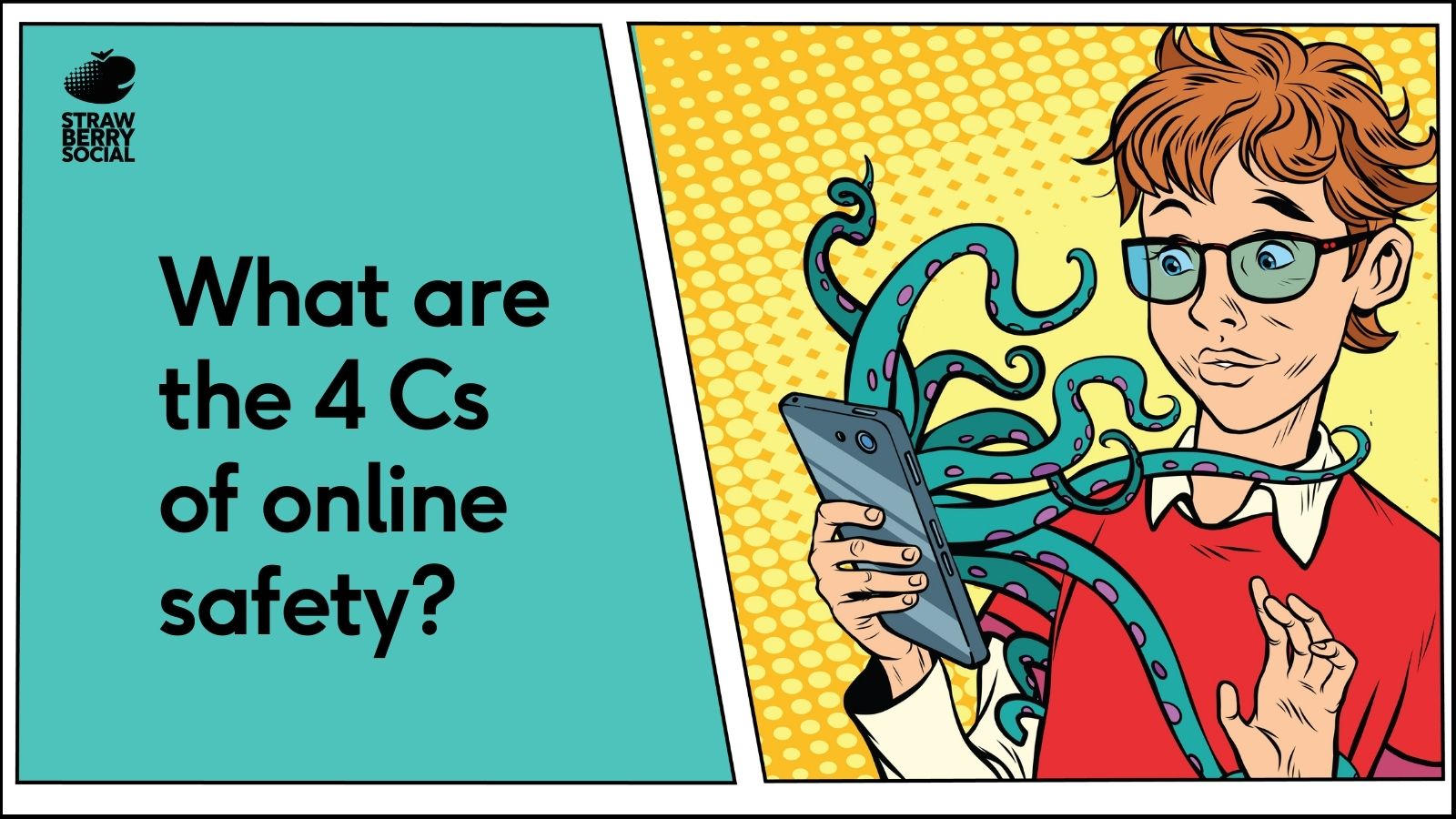
The 4 Cs of online safety: tips to reduce risk, educate, and protect children online
 January 24, 2024
January 24, 2024“With Meta’s decision to prevent the blocking of child sexual abuse imagery on Facebook’s Messenger service, and Apple opting to drop client-side scanning to detect the sharing of abuse, there really has never been a worse time to be a child on the internet”.
Over time digital professionals have worked to clarify what it means to safely exist within the online social ecosystem. Extensive research has been an important part of this equation – especially when discussing young people as they often require specific online safety and digital education.
In this post, we lay out in easy to understand terms what the current risks are for young people on the internet, and offer recommendations for protecting and educating them about these risks. By sharing the 4 Cs of online safety, you will be better equipped to create digital strategies that identify potential harm and know how to protect children from risky behaviour. In addition, having an understanding of how the 4 Cs present themselves in the online world will equip young people with the knowledge and skills they need to be responsible, resilient, and respectful online citizens.
When we put together our best practices for both clients and moderators, StrawberrySocial refers to frameworks such as the one set forth by KCSIE and adopted by UK educational bodies. They have identified these areas of potential risk: Content, Contact, and Conduct. As we work both within and outside the educational system, we expanded the areas of risk to include a fourth ‘C’ – Commerce, like many other organisations working in the online space such as the NSPCC.
Here is a quick breakdown of what each of these risks might look like within the context of online activity:
| RISKS | |||
|---|---|---|---|
| COMMERCIAL | AGGRESSIVE | SEXUAL | |
| CONTENT Child as recipient | Adverts, Spam, Sponsorship, Personal Information | Violent or hateful content | Pornographic or unwelcome sexual content |
| CONTACT Child as participant | Tracking Harvesting Personal Information | Being bullied, harassed, or stalked | Meeting strangers Being groomed |
| CONDUCT Child as actor | Illegal downloading Hacking | Bullying or harassing another person | Creating and uploading inappropriate material |
| COMMERCE Child as customer | Gambling Financial Scams | Terrorism Phishing | Lure into Trafficking |
Depending on your organisation’s social media presence, some of the above risks may be more prevalent than others. It is important to recognise how each of these risks might present themselves within the context of your online environments. For example, if your organisation is a charity working with marginalised children, attempts to extract personal information may come in the form of promises for a better life, or an improvement to their situation. If your brand is an online entertainment site for kids, there may be a higher risk of children bullying each other through the use of any chat functions your site allows.
By breaking down the top risks into easy to read categories you can put in place a variety of strategic safety processes to mitigate each one. Use the above table of information and identify which risks are more likely within your particular business model. By thinking ahead of time about potential risks and how to prevent and report them, you will be prepared to protect and educate your young audience.
4 Online Safety Tips to Implement Now
Our professional moderators and community management specialists are online safety fanatics. Here are four crucial online safety measures they recommend for every organisation.
Use a hybrid of online protection techniques. Use trusted technology to catch the easy stuff, and a well-trained human team of moderators to handle the difficult, challenging situations.
Keep company safety policies and processes up to date. The Online Safety Act has been signed into law. Be sure your tech and legal teams are working together to ensure you’re following the policies set forth in the Act. In addition, it’s important to keep you and your company informed should any changes to the policies happen over time.
Make guidelines and rules of conduct easy to follow. Make simple guidelines that anyone can understand. Many users will be new to online activity and not aware of the dangers. Also, English may be their second language. Make guidelines a part of your registration and log in process so it’s ever-present in their minds when accessing your online services or products.
Report any shifts in activity within your community which may affect their safety. Moderators, community and social media managers, and leadership should have regular reports about the health and safety of your members. Any shifts in their activity, any cultural changes or new slang, should be included in these reports so that together you can update your guidelines and filters on a regular basis.
Top tip: download and complete our free Online Safety Checklist for more actionable tips to help keep your online community safe.
Whether you are in education, social services, charity work, sports teams, theatre groups, online entertainment platforms, parents/carers, or any other group that interacts with children, the 4 Cs outlined above, and subsequent recommendations are built to help you make their online experiences the best it can be. For other helpful information check out our Safety Resources hub, or check out our recent blog posts about online safety.
We share the latest online safety tips and community engagement advice with 100s of other social media professionals in our free monthly newsletter. Subscribe here to get the next issue.


 Share This Post
Share This Post